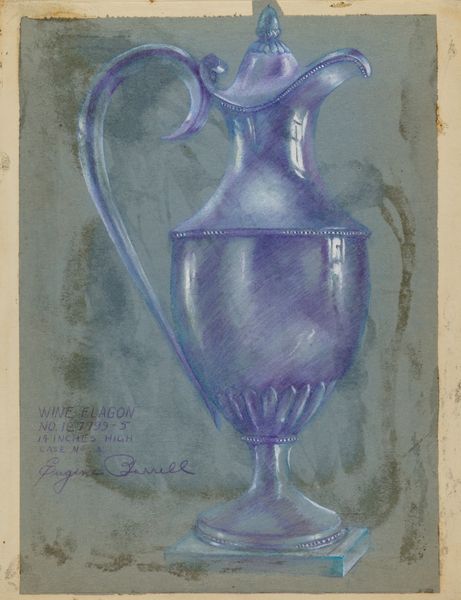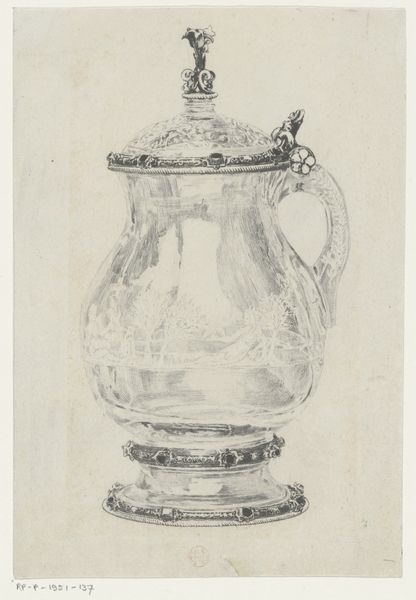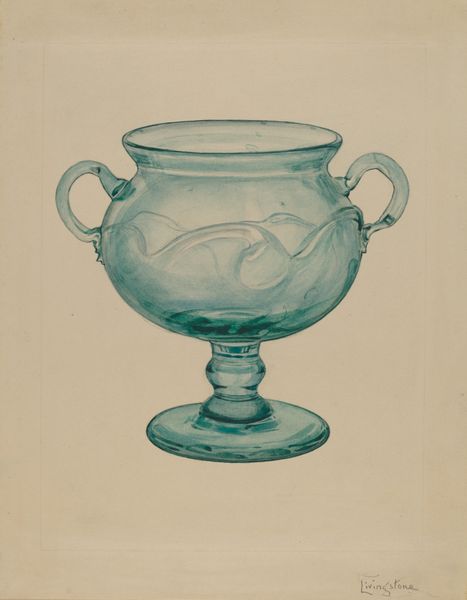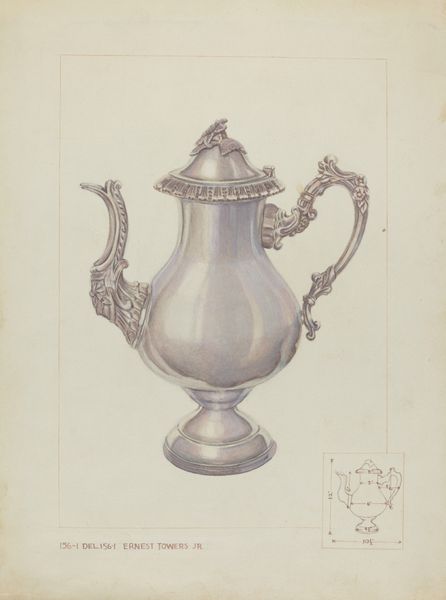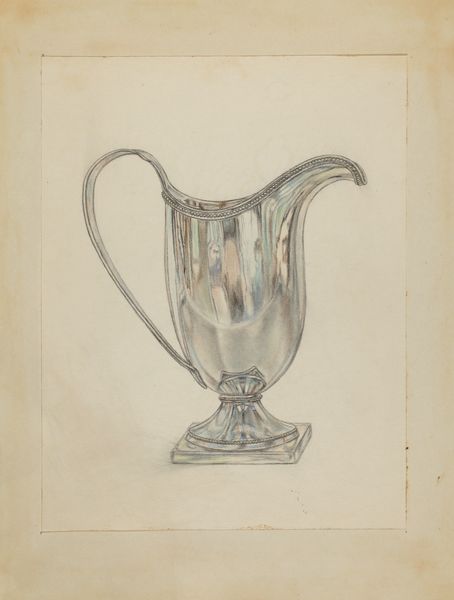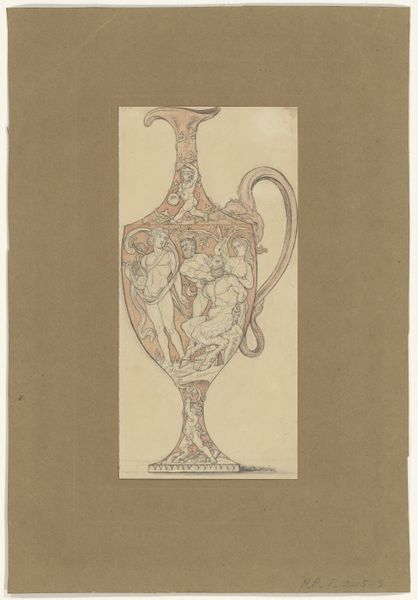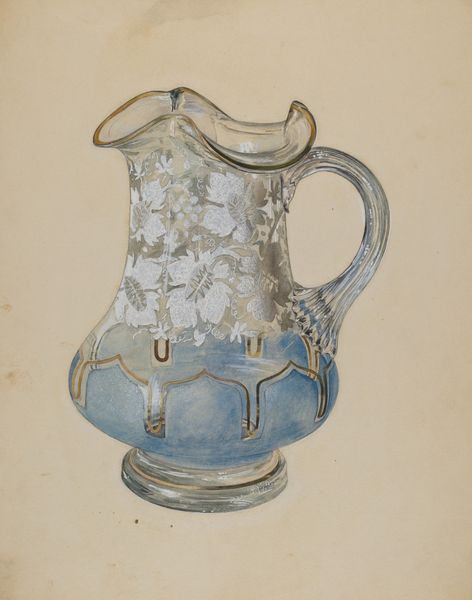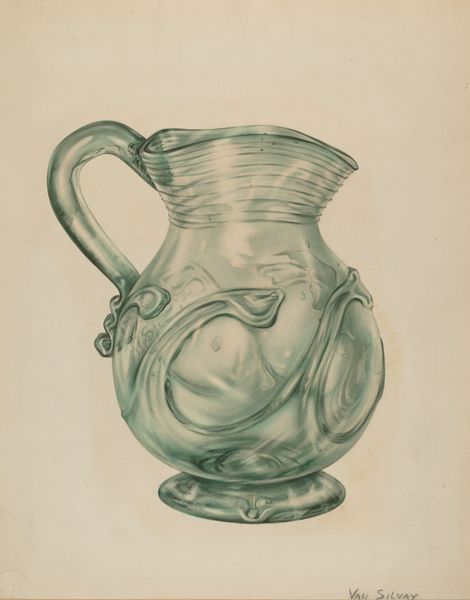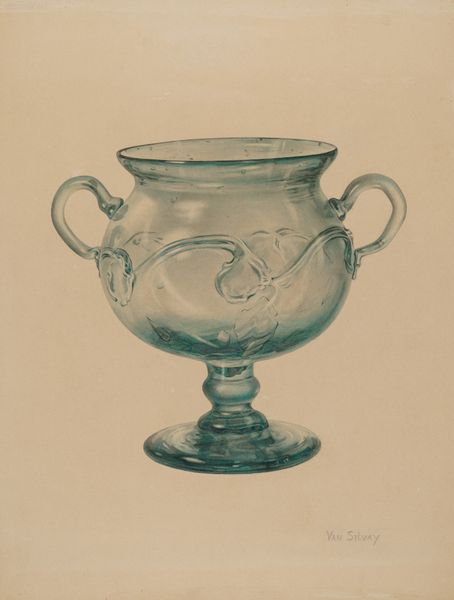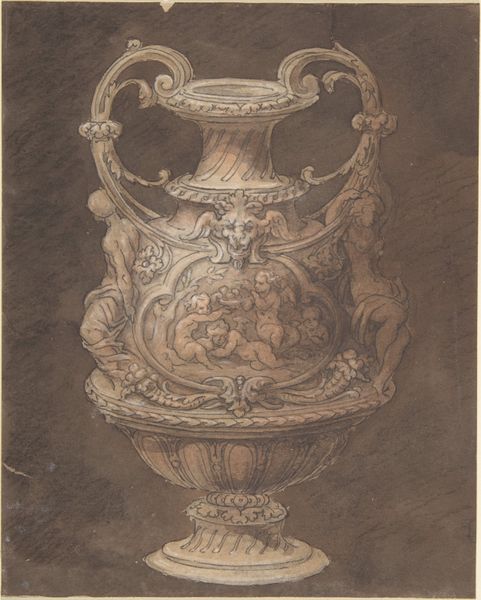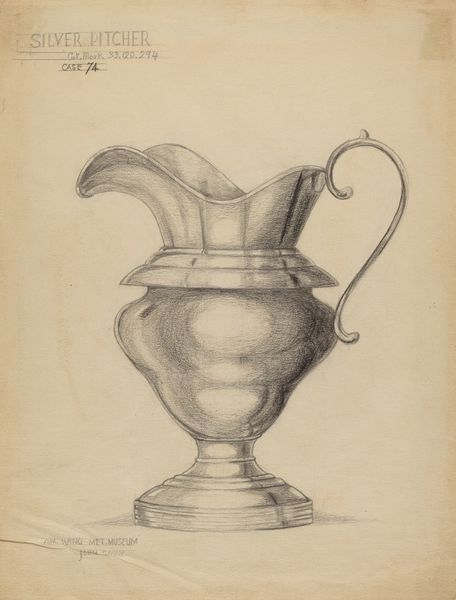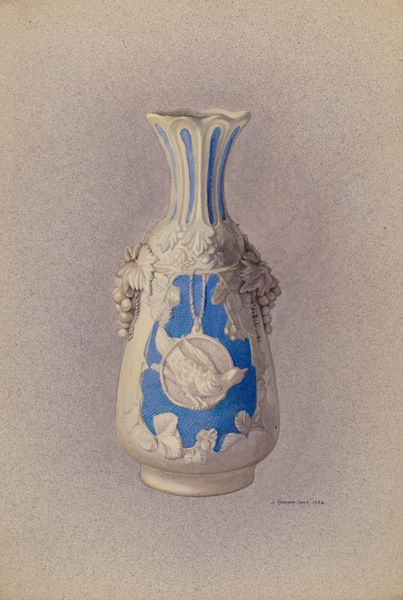
drawing, coloured-pencil
#
drawing
#
coloured-pencil
#
coloured pencil
Dimensions: overall: 28.8 x 21.5 cm (11 5/16 x 8 7/16 in.) Original IAD Object: 7" high
Copyright: National Gallery of Art: CC0 1.0
Editor: Here we have Eugene Barrell's "Silver Creamer," dating to around 1936, created using coloured pencils. It's a striking piece. The reflective quality he captured makes it appear almost photographically real. What strikes you most about it? Curator: This drawing reflects the increasing professionalization of design and craft during the 1930s. It appears almost technical. Consider how the Depression-era affected consumerism, creating a market shift where aspiring designers created images anticipating a product. Editor: So it wasn't necessarily about depicting an existing object, but imagining one? Curator: Precisely. Look at the precision in rendering the grapes and leaves. This isn't just artistic expression; it's salesmanship. The drawing is selling the fantasy of luxury during tough economic times. Why choose this background tone, do you think? Editor: Maybe to make the silver really pop, give it that extra shine. The gray is dull but contrasts well with the bright metallic rendering. Curator: Exactly. The choice reinforces its accessibility to potential manufacturers; it minimizes distractions and promotes functionality. These "renders" played a vital, yet often unseen role, influencing both consumer desires and industrial production. Have your views changed? Editor: Definitely. I initially just saw a pretty picture, but now I recognize it as a tiny artifact in the economic machinery of the time. Curator: Yes, considering its social context unveils previously unseen complexities.
Comments
No comments
Be the first to comment and join the conversation on the ultimate creative platform.
